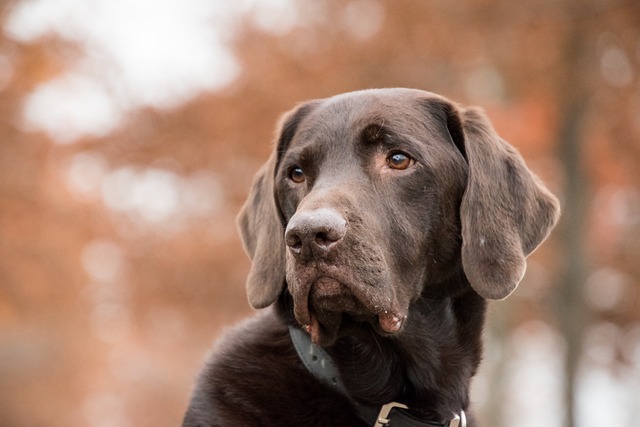
What is glaucoma in a dog?
You might notice your dog squinting more at mealtime or avoiding bright sunlight—these small changes could be early signs of a serious eye condition.
That moment you walk into your living room and find your favorite sneakers shredded into confetti? Yeah, we’ve been there. Chewing isn’t just a quirky habit – it’s a biological necessity for dogs. Puppies chew to soothe sore gums during teething (which can last until 6-7 months), while adult dogs use it to relieve stress, clean teeth, and combat boredom. But handing your dog just anything can be dangerous or downright illegal in some communities. Let’s break down what truly works – safely and responsibly.
The Science of Safe Chewing
Dogs need items that satisfy their jaw strength without breaking teeth or splintering. Veterinary studies show hard materials like antlers, bones, or nylon bones carry fracture risks for molars. Ideal chews have controlled give: they’re durable but slightly compressible under pressure. Think thick rubber toys (like Kongs stuffed with frozen peanut butter), or specially processed collagen chews. Size matters enormously too – a chew small enough to swallow whole is a choking hazard. A good rule? Choose chews longer than your dog’s muzzle. Always supervise first-time use, especially with powerful chewers. If you live in an apartment, opt for low-odor options (avoid rawhide!) to keep neighbors happy – nobody wants lingering smells in shared hallways.
Practical & Safe Options for Different Scenarios
*For teething puppies (8 weeks-6 months):* Frozen rubber teething toys or wet-frozen washcloths provide numbing relief. Avoid anything too hard – puppy teeth are fragile.
For moderate chewers: Rubber puzzle toys with grooves that hold dog-safe toothpaste or yogurt offer mental stimulation and dental benefits.

For power chewers: Layered rubber toys or FDA-compliant edible chews like veterinary-tested dental sticks last longer. Crucial note: Rawhide and cooked bones splinter easily and are linked to intestinal blockages – skip them. If you do offer natural bones (like recreational beef femurs), source them from reputable butchers, supervise constantly, and discard once they crack. Remember: Raw bones carry salmonella risks – always wash hands and surfaces after handling, and never use them near immunocompromised family members.
The Compliance & Culture Corner
Here’s where many new owners stumble:
Public Safety: If your dog chews outdoors at a park, you must immediately bag and bin any remnants. Leaving chew debris violates "poop-scoop" ordinances in cities like New York or London – fines can hit $250+. It also attracts wildlife, creating ecosystem issues in natural reserves.
Positive Reinforcement Only: Never punish destructive chewing by rubbing a dog’s nose in debris or yelling. This increases anxiety and worsens the behavior. Instead, redirect calmly to an approved chew and praise enthusiastically. Many US states and EU countries explicitly discourage aversive training under animal welfare codes.
Vaccination Laws: Before puppy playdates involving shared chews, ensure all dogs are up-to-date on core vaccines (rabies, distemper, parvovirus). In most U.S. states and EU nations, rabies vaccination is legally mandatory for public outings.
Apartment/Community Etiquette: Avoid noisy chew toys (like hard plastic) during quiet hours. If using edible chews on balconies or patios, check for residue that could stain communal surfaces.
Making Chewing Work for Your Lifestyle
Observe your dog’s chewing style: Are they a shredder, a gnawer, or a gulper? Match the chew type accordingly. Rotate 3-4 approved options weekly to prevent boredom. Always provide fresh water – chewing dehydrates! And please – consult your vet before introducing new chews if your dog has dental issues, food allergies (common in bully sticks or animal-based products), or a history of pancreatitis (avoid high-fat chews).
Final Pro Tip: Combine chewing with enrichment. Hide kibble inside hollow rubber toys or smear liver paste on lick mats. Mental exhaustion reduces destructive chewing more than any physical restraint.

You might notice your dog squinting more at mealtime or avoiding bright sunlight—these small changes could be early signs of a serious eye condition.

Let’s set the scene: It’s a sweltering Phoenix afternoon—105°F outside—and you rushed your 2-year-old Lab mix, Cooper, on a quick walk to “get it over with.”

Let’s get real: You’re in your Miami apartment, watching your 3-year-old Corgi, Loki, struggle to climb the stairs to your second-floor unit.

Many dog owners brush off occasional scratching as just “dog behavior,” but persistent itching often signals something more—like a food allergy.

You might first notice your dog scratching more than usual—chewing at their paws until the fur looks thin, or rubbing their face against the couch nonstop.

Let’s be real: You’re standing in your Chicago apartment, watching your 3-year-old Beagle, Max, huff and puff just to climb onto the couch.